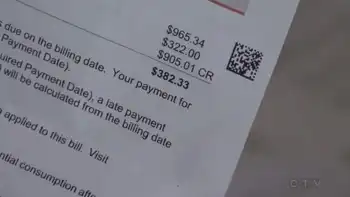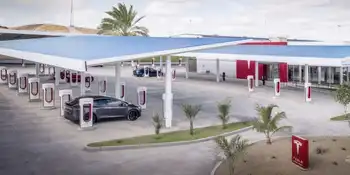Using code-named strategies such as "Death Star" and "Fat Boy," the Houston energy giant sent California electricity through out-of-state intermediaries to jack up the price. It also structured and disguised trades to allow it to maximize lucrative "congestion" fees, according to two of the three documents.
The three Enron internal memos appeared without explanation Monday on the Federal Energy Regulatory Commission Web site. Robert Bennett, the Washington, D.C., lawyer representing Enron, said new management discovered the documents about 10 days ago and hand-delivered them to FERC on Monday.
Two of the three documents seem to validate accusations from critics that Enron and other power traders and generators "gamed" the power market and contributed to an energy crisis that resulted in blackouts in California and higher electricity rates the length of the West Coast.
The first two, virtually identical memos, were dated Dec. 6 and Dec. 8, 2000, and were co-written by Stephen Hall, a lawyer then working at Stoel Rives in Portland. The memos appear under a Stoel Rives letterhead. Portland's largest law firm did work for Enron North America, which oversaw Enron's power trading.
Henry Hewitt, chairman of Stoel Rives, said an Enron lawyer asked the law firm to look into the trading strategies.
"We were asked by Enron's inside counsel to learn about and describe for him Enron's pre-existing trading practices," Hewitt said. "The memorandum was an initial fact-finding report. It contains a summary of Enron's trading practices as we found them."
However, a third internal memo prepared by a different law firm claims that most of Enron's trading strategies actually did no harm to ratepayers and may have actually helped them. It added that the prior two documents were flat wrong in some of their conclusions.
"Some of the information contained in the preliminary memorandum, which resulted in some erroneous assumptions and conclusions, cannot be supported by the facts and evidence which are now known," states the third document.
Critics dismissed the third memo, from the national law firm Brobeck, as an effort by Enron to "sanitize" its own records in case of future legal challenges.
"These are probably the most significant documents we've seen in 18 months," said Robert McCullough, a Portland consultant who has testified before congressional panels about Enron and its role in the power industry. "The players discovered gaping holes in the system and were taking full advantage of it."
The actions described in the memos came before Enron's financial problems became public. The company's bankruptcy Dec. 2 amid revelations about its accounting procedures revived interest in its trading operations during the energy crisis. Enron is being investigated by more than a dozen congressional, state and regulatory panels for a wide range of questionable business practices.
Enron conducted most of its electricity trading out of Portland. It was far and away the largest single trader of electricity, controlling about 30 percent of the Western market.
Three of Enron's 125 Portland traders, interviewed separately in recent weeks, agreed that the power trading office was hugely profitable. But they denied that their office engaged in any questionable trading tactics.
After Enron went into bankruptcy, it sold its energy trading unit to a subsidiary of investment bank UBS Warburg.
"Megawatt laundering" The Dec. 6 and 8 memos detailed several strategies Enron used to operate in the complex regulatory regime imposed by the state of California.
Price caps, imposed by regulators in hopes of slowing the escalation of power prices, allowed Enron and other traders to buy power in California for future use at $250 per megawatt hour.
They could then export it out of state for as much as $1,900. Or they could utilize the "Ricochet" strategy -- send the power out of state to another company, then buy it back and sell it in California at a greatly increased price on the real-time market -- where power could be sold for immediate use without price limits.
"It is clear that Enron's intent under this strategy is solely to arbitrage the spread" between the daily and real-time market, the memos state, "and not to serve load or meet contractual obligations."
This tactic, dubbed "megawatt laundering" by critics, has long been a focus of investigators.
"This is no surprise to me, though it's nice to see it in an internal memo," said California Sen. Joe Dunn, chairman of the California State Senate Select Committee to Investigate Price Manipulation of the Wholesale Energy Market.
Dunn added that Enron should have produced the newly public documents months ago both to his committee and to the attorneys general in Oregon, California and Washington. Both parties subpoenaed Enron for trading-related documents as part of their ongoing investigations.
FERC spokeswoman Barbara Connors said the agency has no comment because its investigation continues.
Many of Enron's tactics were intended to capitalize on congestion fees -- money paid by the California Independent System Operator to power providers as an incentive to avoid bottlenecks in the overburdened power grid. The ISO manages the state's power grid.
In the "load shift" strategy, traders would schedule deliveries in such a way as to "create the appearance of congestion through the deliberate overstatement of loads." Then Enron would send its power over an alternate route and collect congestion fees, which could be worth more than the power itself.
"Our concern here is that by knowingly increasing the congestion costs, Enron is effectively increasing the costs to all market participants," the two memos from Stoel Rives stated. Enron traders using the load shift tactic produced profits of approximately $30 million in the company's 2000 fiscal year, the memos stated.
The later Enron memo from Brobeck said this profit estimate "was vastly overstated and indeed, confused."
The new documents add momentum to the Enron investigations, but some energy industry experts said it might take more to prove Enron broke the law.
"It would be difficult to prove that the market as a whole was manipulated even though individual companies may have taken actions to better position themselves in term of pricing," Jefferies & Co. analyst Paul Fremont told Bloomberg News. "Those opportunities would never have existed outside a supply-demand imbalance."
The release of the documents came just days after Enron unveiled a plan to remake the company, focusing on distribution of electricity and natural gas rather than trading. Portland General Electric, an Enron subsidiary, is a centerpiece of that strategy.
Enron ordered its lawyers not to assert attorney-client privilege, Bennett said. "This was an act of corporate responsibility," he said. "If the documents are correct, it would certainly confirm what the critics are saying."
The memos were written in the midst of an energy crisis that drove wholesale prices in California up more than tenfold.
In early November 2000, FERC issued proposals to alleviate soaring wholesale prices. On Dec. 20, then-Energy Secretary Bill Richardson and a FERC commissioner met with five Western governors at a hastily called meeting in Denver.
The power shortage eased in 2001, but the aftereffects of the energy crisis continue to hit Western consumers in the form of higher electricity prices.
Related News

More pylons needed to ensure 'lights stay on' in Scotland, says renewables body
GLASGOW - Renewable energy in Scotland is being held back by outdated grid infrastructure, industry leaders said, as they warned new pylons and power lines are needed to "ensure our lights stay on".
Scottish Renewables said new infrastructure is required to transmit the electricity generated by green power sources and help develop "a clean energy future".
A new report from the organisation - which represents companies working across the renewables sector - makes the case for electricity infrastructure to be updated.
But it comes as electricity firms looking to build new lines or pylons face protests, with groups such as the Strathpeffer and…




